Anekanta® specialises in providing AI Strategy, Literacy and Governance services to medium and large organisations. Its services include ISO/IEC 42001 preparation and readiness, helping organisations implement structured AI policies that drive success. In this article the company outlines the AI Governance standard, and explains why it’s important for organisations to adopt it.
AI Strategy, policy, and governance as strategic enablers
ISO/IEC 42001 is positioned as a compliance standard for AI governance, but its real value goes far beyond supporting purchasing decisions and regulatory requirements. It provides a structured framework for AI strategy, policy, and governance, ensuring AI is not only safe and responsible but also strategically aligned with business success. By embedding AI governance into the core of an organisation, companies can maximise the benefits of AI while mitigating its risks.
AI Policy: Setting the foundation for success
At its core, ISO/IEC 42001 defines an organisation’s AI policy—a set of principles and controls that dictate how AI is used, developed, and managed. This policy ensures that:
- AI is deployed in ways that drive business objectives rather than as isolated, uncontrolled initiatives.
- Stakeholders across the organisation are aligned, ensuring AI adoption is coordinated and effective.
- AI risks are identified early, preventing costly failures and compliance breaches.
Ensuring organisation-wide AI adoption
A key challenge with AI deployment is fragmentation – different teams experimenting with AI without central oversight. ISO/IEC 42001 ensures all AI systems within a company are reviewed and aligned, creating:
- Visibility across all AI initiatives, preventing duplication and shadow AI.
- Clear accountability structures, defining who is responsible for AI governance.
- Cross-functional collaboration, ensuring AI is used effectively across departments.
From risk management to performance optimisation
One of the most overlooked benefits of AI governance is its ability to drive performance monitoring and optimisation. If you can control AI risk, you can also control AI success. ISO/IEC 42001 provides a framework for tracking AI performance metrics, allowing businesses to:
- Measure AI accuracy, reliability, and business impact.
- Establish key performance indicators (KPIs) for AI initiatives.
- Monitor AI compliance and ethical risks in real time.
Moving from POC to production: Ensuring board confidence
Many AI projects stall after the Proof of Concept (POC) stage due to lack of clear governance and business case justification. ISO/IEC 42001 provides the framework to:
- Demonstrate AI viability beyond experimentation, ensuring AI solutions are ready for production use.
- Establish board-level oversight, giving decision-makers confidence that AI deployments are controlled, compliant, and strategically aligned.
- Enable structured approvals, ensuring that AI projects move smoothly from POC to full-scale deployment.
Proportionality: Right-sizing ISO/IEC 42001 for your organisation
While ISO/IEC 42001 offers a comprehensive governance framework, full certification may not be necessary for all organisations. The cost of implementation can escalate quickly, particularly for companies that are only using basic AI tools, such as Copilot in Microsoft 365.
Instead of a rigid, one-size-fits-all approach, organisations can adopt the principles of ISO/IEC 42001 as a foundation without leaping straight into full certification, ensuring:
- Risk and governance controls are proportional to AI usage.
- Smaller AI deployments remain cost-effective while still benefiting from structured governance.
- A clear pathway towards future compliance with the EU AI Act to ensure the principles of AI controls are established.
The business case for ISO/IEC 42001
For many organisations, AI is no longer an experimental tool it’s a business-critical technology. Implementing ISO/IEC 42001 is not just about governance; it’s about ensuring AI delivers value, remains compliant, and is continually optimised.
Companies that adopt structured AI governance will:
- Reduce AI-related risks while accelerating AI innovation.
- Ensure alignment between AI investments and business strategy.
- Build trust with stakeholders, regulators, and customers.
AI strategy, policy, and governance – Together as a competitive advantage
ISO/IEC 42001 is not just a risk management tool it’s a strategic enabler that allows businesses to harness AI effectively, drive measurable success, and future-proof their AI strategies. Organisations that adopt AI strategy and governance early will be best positioned to scale AI responsibly and sustainably.
Just getting started with AI?
If you are at the start of your journey, Anekanta® can help you understand the underlying governance principles which are necessary for a successful AI deployment. Furthermore if your board would like to improve its AI literacy skills, we have developed a CPD certified professional training programme
- Why not get started with Anekanta®’s AI Governance framework for boards
- Enquire about Anekanta®’s CPD Certified Training ‘AI in the Boardroom: AI Literacy and Governance for Boards and Senior Leaders’
Contact Anekanta® to explore how AI strategy can become a competitive advantage for your business.
For more Anekanta® news, click here





